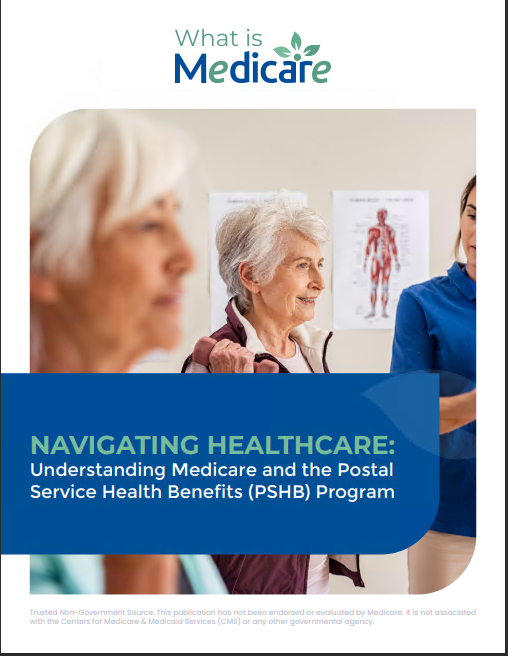Key Takeaways
-
You generally become eligible for Medicare at age 65, but there are exceptions for people with certain disabilities or health conditions.
-
Knowing your eligibility doesn’t require guesswork—specific rules and timelines define when and how you qualify.
Understanding Medicare Eligibility Basics
Medicare is a federal health insurance program designed for people aged 65 and older, but that’s not the only group it covers. In 2025, eligibility continues to follow federal guidelines that take into account age, disability status, and specific medical diagnoses. To determine whether you qualify, you’ll need to consider a few key factors like your age, work history, and any medical conditions.
Who Qualifies at Age 65
You’re eligible for Medicare when you turn 65 if you meet both of the following conditions:
-
You are a U.S. citizen or a legal permanent resident who has lived in the country for at least five consecutive years.
-
You or your spouse has worked and paid Medicare taxes for at least 10 years (40 quarters).
Your Initial Enrollment Period (IEP) begins three months before the month of your 65th birthday, includes your birthday month, and ends three months after. This gives you a total of seven months to enroll without facing any penalties.
Under 65? You Might Still Be Eligible
Not everyone has to wait until 65. You may qualify for Medicare earlier if one of the following applies to you:
-
You’ve received Social Security Disability Insurance (SSDI) for at least 24 months.
-
You have End-Stage Renal Disease (ESRD) requiring dialysis or a kidney transplant.
-
You have Amyotrophic Lateral Sclerosis (ALS or Lou Gehrig’s Disease).
In these cases, you’re usually enrolled automatically and don’t need to apply.
The Role of Social Security and Railroad Retirement
Your enrollment in Medicare is often linked to whether you receive Social Security or Railroad Retirement Board (RRB) benefits:
-
If you’re already receiving benefits when you turn 65, you’ll be enrolled in Medicare Parts A and B automatically.
-
If not, you’ll need to apply during your Initial Enrollment Period.
Applying is easy and can be done online, over the phone, or in person at your local Social Security office.
Medicare Part A and Part B Eligibility Details
Medicare Part A (Hospital Insurance) and Part B (Medical Insurance) are the core components of Original Medicare. Here’s what you need to know about qualifying for each:
Part A
You typically qualify for premium-free Part A if:
-
You’re 65 or older and eligible for or receiving Social Security or RRB benefits.
-
You’re under 65 and have a qualifying disability or medical condition.
If you don’t meet the work history requirement, you can still buy Part A by paying a monthly premium. In 2025, this applies to those who have fewer than 40 work quarters.
Part B
Part B is optional, and you pay a monthly premium to keep it. However, delaying enrollment can lead to a late penalty unless you have other qualifying coverage, such as through a current employer.
Timing Matters: Enrollment Periods You Need to Know
Missing your initial window can result in coverage delays or lifelong penalties. Here are the key enrollment periods for 2025:
1. Initial Enrollment Period (IEP)
-
Who: Anyone turning 65
-
When: 3 months before to 3 months after your 65th birthday month
2. General Enrollment Period (GEP)
-
Who: Those who missed their IEP and aren’t eligible for a Special Enrollment Period
-
When: January 1 to March 31 each year
-
Coverage Starts: July 1 of the same year
3. Special Enrollment Period (SEP)
-
Who: Those with certain life events like losing employer coverage
-
When: Depends on your situation, typically up to 8 months after coverage ends
4. Annual Enrollment Period (AEP)
-
Who: Anyone eligible for Medicare
-
When: October 15 to December 7
-
Purpose: To switch plans or make changes for the upcoming year
How Disability Affects Medicare Eligibility
If you’ve been receiving SSDI benefits for 24 months, you become automatically eligible for Medicare in the 25th month. If you have ALS, you’re enrolled in Medicare as soon as your disability benefits begin—there’s no 24-month waiting period. For those with ESRD, eligibility depends on specific treatment timelines:
-
Dialysis for at least three months
-
Immediate eligibility if you undergo a kidney transplant
This ensures that people with serious medical needs aren’t left without coverage.
What If You’re Still Working at 65?
If you’re still employed and have group health insurance through your employer or your spouse’s employer, you might be able to delay enrolling in Part B without penalty. However, the employer must have 20 or more employees to qualify for this exception. Once your employment or coverage ends, a Special Enrollment Period allows you to sign up for Part B within 8 months.
Income and Asset Limits: What’s Relevant
Original Medicare eligibility does not depend on your income or assets. However, financial information does affect eligibility for programs that help pay Medicare costs, such as:
-
Medicare Savings Programs (MSPs)
-
Extra Help for prescription drug costs
These programs have specific income and resource limits that vary by state.
How to Check If You’re Eligible Today
You don’t need to guess whether you qualify. You can check your eligibility by using the following steps:
-
Contact the Social Security Administration by phone or online
-
Use Medicare’s official eligibility tool
-
Speak with a licensed agent for guidance based on your specific situation
Being proactive ensures you don’t miss enrollment windows or pay more than necessary.
Common Misunderstandings About Medicare Eligibility
Myth: You’re Automatically Enrolled at 65 No Matter What
Not true. You must be receiving Social Security or RRB benefits to be automatically enrolled. Otherwise, you must apply during your IEP.
Myth: Medicare Is Only for Seniors
While age 65 is the standard, millions under 65 qualify due to disability or health conditions. Don’t overlook your eligibility just because you haven’t reached that milestone.
Myth: Medicare Covers Everything
Medicare provides significant coverage, but it doesn’t pay for all services. Some people opt to add other types of coverage to help with costs not included in Original Medicare.
When to Start Planning for Medicare
If you’re approaching age 64, now is the time to start planning. Create a checklist to:
-
Review your current health insurance
-
Learn about Medicare parts and how they apply to you
-
Understand potential out-of-pocket costs
-
Identify your enrollment period
Staying organized helps you avoid late penalties and coverage gaps.
Why This Matters in 2025
Healthcare decisions in 2025 are shaped by updated costs, new rules, and enhanced outreach efforts. With the rising importance of timely enrollment and understanding eligibility criteria, you’re better off planning ahead rather than reacting after a missed deadline. Taking control of your Medicare eligibility today gives you peace of mind tomorrow.
Know Where You Stand—And Take the Next Step
You don’t need to figure out Medicare eligibility on your own. There are specific rules, timelines, and conditions that determine when you qualify. By learning the basics and acting early, you can make informed decisions that affect your healthcare and financial well-being.
If you’re unsure about your eligibility or what steps to take next, connect with a licensed agent listed on this website for professional advice tailored to your situation.






